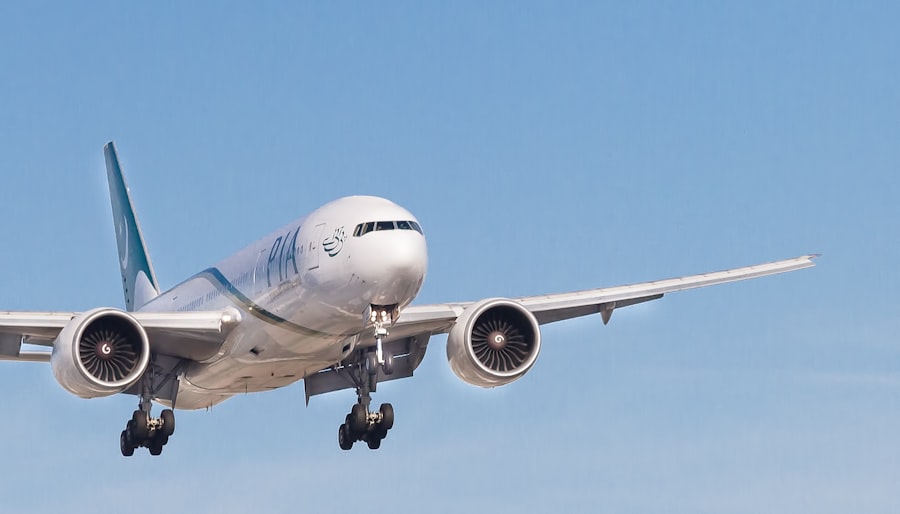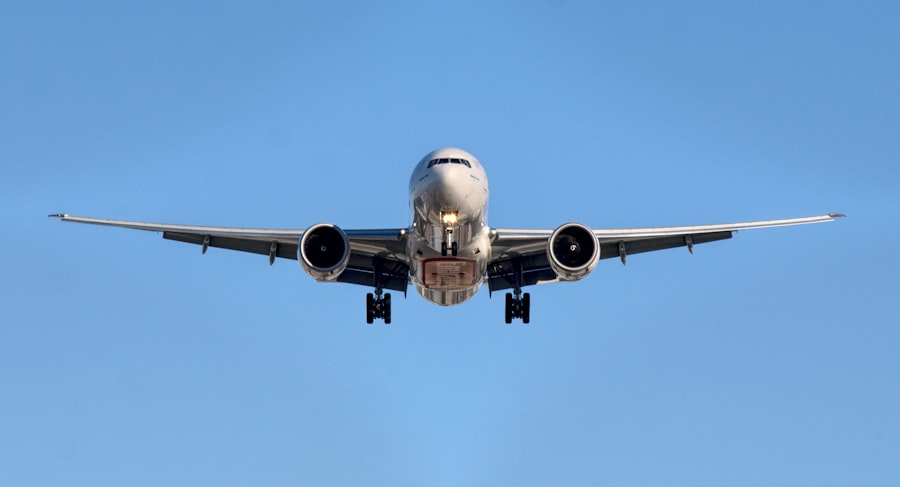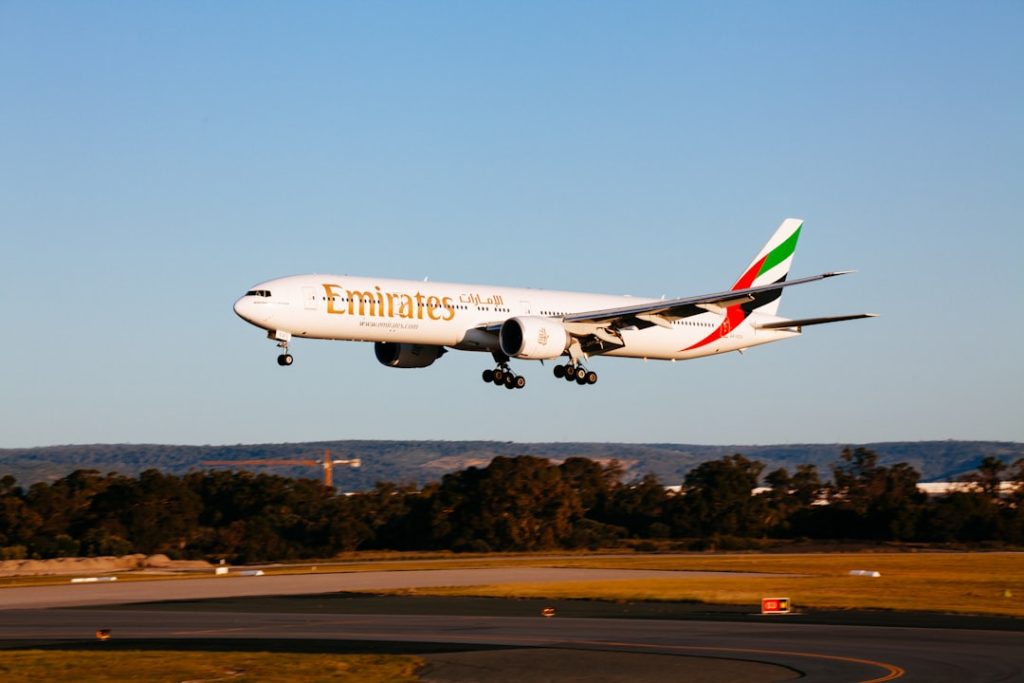The Boeing 777, often referred to as the “Triple Seven,” is a long-range, wide-body, twin-engine jet that has become a cornerstone of modern commercial aviation since its introduction in the mid-1990s. Designed to accommodate a variety of routes and passenger capacities, the 777 has earned a reputation for its reliability, efficiency, and advanced technology. With its distinctive appearance, characterized by a large fuselage and high aspect ratio wings, the aircraft has captured the attention of airlines and passengers alike.
The 777 family includes several variants, each tailored to meet specific operational needs, ranging from the 777-200 to the more recent 777X series. The aircraft’s introduction marked a significant milestone in Boeing’s history, as it was the first commercial jet to be designed entirely using computer-aided design (CAD) technology. This innovative approach allowed for greater precision in engineering and design, resulting in an aircraft that not only met but often exceeded the expectations of airlines and passengers.
The Boeing 777 has since become one of the best-selling wide-body aircraft in history, with thousands of units delivered to airlines around the globe. Its success can be attributed to a combination of factors, including its operational versatility, fuel efficiency, and passenger comfort.
Key Takeaways
- The Boeing 777 is a popular long-range, wide-body twin-engine jet airliner
- The design and development of the Boeing 777 focused on fuel efficiency and advanced technology
- Advanced technology and innovation in the Boeing 777 include fly-by-wire controls and advanced avionics
- Safety and reliability features of the Boeing 777 include redundant systems and advanced monitoring
- The Boeing 777 is known for its impressive performance and fuel efficiency, making it a popular choice for airlines
Design and Development of the Boeing 777
The design and development of the Boeing 777 began in the early 1990s, driven by a growing demand for a new generation of long-haul aircraft that could efficiently serve international routes. Boeing conducted extensive market research to understand the needs of airlines and their passengers, which ultimately shaped the aircraft’s specifications. The 777 was designed to fill the gap between the smaller Boeing 767 and the larger Boeing 747, offering airlines a versatile option for medium to long-haul flights.
One of the most notable aspects of the 777’s design is its wing structure. The aircraft features a high aspect ratio wing that enhances aerodynamic efficiency, allowing for improved fuel economy and performance. The wings are also equipped with advanced winglets that further reduce drag during flight.
Additionally, the 777 was designed with a spacious cabin that can accommodate various seating configurations, making it adaptable for different airline requirements. The development process involved rigorous testing and validation phases, including wind tunnel tests and flight simulations, ensuring that the aircraft met stringent safety and performance standards before entering service.
Advanced Technology and Innovation

The Boeing 777 is renowned for its incorporation of advanced technology and innovative features that set it apart from its competitors. One of the most significant advancements is its use of fly-by-wire technology, which replaces traditional mechanical flight controls with electronic systems. This not only enhances the aircraft’s handling characteristics but also allows for greater precision in flight operations.
The fly-by-wire system is complemented by advanced avionics that provide pilots with real-time data on aircraft performance and navigation. Another groundbreaking feature of the Boeing 777 is its engine technology. The aircraft is powered by high-bypass turbofan engines, such as the Pratt & Whitney PW4000 or General Electric GE90 series, which are among the most powerful and efficient engines in commercial aviation.
These engines are designed to minimize noise and emissions while maximizing thrust and fuel efficiency. The GE90 engine, in particular, has set records for its size and power output, further solidifying the 777’s reputation as a leader in aviation technology.
Safety and Reliability Features
| Feature | Description |
|---|---|
| Anti-lock Braking System (ABS) | A safety system that prevents the wheels from locking up during braking, allowing the driver to maintain steering control. |
| Electronic Stability Control (ESC) | A system that helps to prevent skidding and loss of control by automatically applying brakes to individual wheels. |
| Adaptive Cruise Control | A feature that automatically adjusts the vehicle’s speed to maintain a safe following distance from the vehicle ahead. |
| Lane Departure Warning System | An alert system that warns the driver when the vehicle is unintentionally drifting out of its lane. |
Safety is paramount in aviation, and the Boeing 777 has been engineered with numerous safety features that enhance its reliability in various operating conditions. The aircraft is equipped with redundant systems for critical components, ensuring that if one system fails, others can take over seamlessly. This redundancy extends to flight control systems, hydraulic systems, and electrical systems, providing an added layer of security for both pilots and passengers.
Moreover, the Boeing 777 has undergone rigorous testing to meet international safety standards set by organizations such as the Federal Aviation Administration (FAA) and the European Union Aviation Safety Agency (EASA). The aircraft’s design includes features such as advanced weather radar systems that help pilots navigate through adverse weather conditions safely. Additionally, the 777’s cockpit is equipped with state-of-the-art avionics that enhance situational awareness, allowing pilots to make informed decisions during flight operations.
Performance and Efficiency
The performance characteristics of the Boeing 777 are among its most impressive attributes. With a range of approximately 5,000 to 8,000 nautical miles depending on the variant, it is capable of serving long-haul routes without requiring frequent refueling stops. This extended range makes it an ideal choice for airlines operating transcontinental or intercontinental flights.
The aircraft’s cruising speed typically hovers around Mach 0.84, allowing it to compete effectively with other long-range jets. Fuel efficiency is another critical aspect of the Boeing 777’s performance profile. The combination of advanced aerodynamics, lightweight materials, and powerful engines contributes to lower fuel consumption compared to older aircraft models.
Airlines benefit from reduced operating costs while also minimizing their environmental impact through lower carbon emissions per passenger mile. This focus on efficiency has made the Boeing 777 a preferred choice for many airlines looking to optimize their fleets for both economic and environmental sustainability.
Interior and Passenger Comfort

Passenger comfort is a key consideration in the design of any commercial aircraft, and the Boeing 777 excels in this area with its spacious cabin layout and thoughtful amenities. The aircraft typically features wider seats compared to many other jets in its class, providing passengers with more room to relax during long flights. Airlines have the flexibility to configure their cabins in various ways, accommodating different classes of service such as economy, business, and first class.
In addition to spacious seating arrangements, many Boeing 777s are equipped with modern entertainment systems that offer passengers a wide selection of movies, music, and games. Larger overhead bins provide ample storage space for carry-on luggage, enhancing convenience for travelers. Furthermore, advancements in cabin pressurization technology contribute to a more comfortable flying experience by reducing fatigue during long-haul flights.
The overall design ethos prioritizes passenger well-being, making air travel more enjoyable.
Global Impact and Influence
The Boeing 777 has had a profound impact on global aviation since its introduction. Its versatility has allowed airlines to expand their route networks significantly, connecting cities that were previously underserved or inaccessible by air travel. This expansion has facilitated international trade and tourism, contributing to economic growth in various regions around the world.
Airlines such as Emirates, Qatar Airways, and United Airlines have integrated the 777 into their fleets as a backbone for long-haul operations. Moreover, the success of the Boeing 777 has influenced other manufacturers in the aviation industry. Competitors have sought to develop their own long-range aircraft models that can rival the capabilities of the 777.
This competitive landscape has driven innovation across the industry as manufacturers strive to enhance fuel efficiency, passenger comfort, and safety features in their designs. The Boeing 777’s legacy continues to shape aviation trends and standards globally.
Future of the Boeing 777
As aviation continues to evolve in response to changing market demands and environmental considerations, the future of the Boeing 777 appears promising yet challenging. The introduction of the Boeing 777X series represents a significant step forward in terms of technology and efficiency. With new engines that promise even greater fuel savings and advanced wing designs featuring folding wingtips for improved aerodynamics during takeoff and landing, the 777X aims to maintain its competitive edge in an increasingly crowded market.
However, challenges such as fluctuating fuel prices, regulatory changes regarding emissions standards, and shifts in passenger preferences towards more sustainable travel options will shape the future landscape for all commercial aircraft, including the Boeing 777. Airlines may increasingly seek out models that offer hybrid or fully electric capabilities as part of their commitment to reducing carbon footprints. As such developments unfold, Boeing will need to adapt its strategies while continuing to innovate within its existing product lines to ensure that the Boeing 777 remains relevant in an ever-changing aviation environment.


